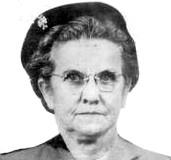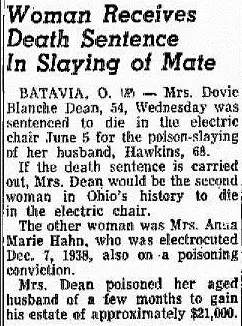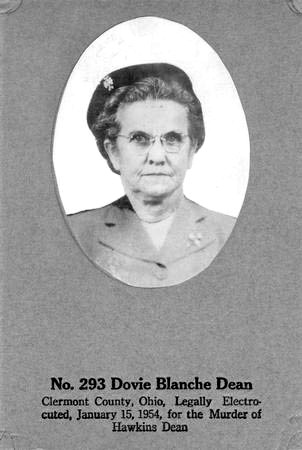During August 1952, Dovie gave
Hawkins arsenic on four occasions, dumping the powder in his milk.
Once, when Hawkins came down with severe stomach pains, she called the
ambulance that took him to the hospital. This, she claimed, showed
that she did not kill her husband.
She admitted giving him some
powder, but said it was at his request for a headache.
By August 22, 1952, Hawkins was
dead. An autopsy revealed the obvious signs of arsenic poisoning
(bright red organs) and Dovie was brought in for questioning.
She initially blamed the murder
on her son.
The young man “became hysterical
when told his mother had accused him of the crime,” Dericks told the
press. Her interrogators, convinced of her son’s innocence, pressed
her for information and she admitted she killed her husband.“If a
mother can make such a charge against her son, wouldn’t she be capable
of killing?” Dericks asked her. “Don’t you want to change your story?”
“And take the blame myself?”
Dovie asked. A few moments later she spoke again.
“Yes, I want to change my
story,” she said, matter-of-factly. “I did it.”
She told police that Hawkins
could not satisfy her and that led to several arguments. Eventually he
threatened to kill her, she said.
“I got him before he got me,”
she told them.
“He wanted a housekeeper,” she
said. “I wanted a home.”
Dovie was interviewed by a
University of Cincinnati psychiatrist who found her sane, but with a
flattened affect.
“I examined her after her
arrest,” said Dr. Robert Buckley. “I found she is not insane. She was
sad and melancholy, and on the verge of tears several times, but the
tears would not come.”
During her brief trial, Dovie
sat stony still and obdurate, telling friends that “I cannot cry.”
Her only argument in defense was
that she confessed to shield her son from an earlier marriage who
actually committed the crime.
The jury took just 40 minutes to
convict her without a recommendation for mercy.
Her emotionless exterior nearly
broke when the verdict came, and she tensed briefly before leaning
back in her chair. When she was escorted from the courtroom, her icy
demeanor contrasted with the cries of anguish from her family.
Under Ohio law at the time, the
judge was required to sentence her to death.
Dovie became the second woman to
be sentenced to die in the electric chair; the first was Anna Marie
Hahn, another poisoner.
Hahn died screaming in terror,
pleading for her life. Dovie Dean was an ice queen to the end.
Before moving to the Ohio State
Pentitentiary from Marysville Reformatory, she managed to gain 30
pounds and kept a pet parakeet she named “Charlie.”
On January 15, 1954, she sat
with her spiritual advisor in the anteroom outside the death chamber,
drinking coffee and taking a pass on the cookies. Shortly before it
came time to move into the execution room, the top of her head was
shaved to allow for better contact with the electrode, and as a last
request she asked that someone sing “What a Friend We Have in Jesus.”
Oddly, perhaps because none of
the persons present was confident in his singing voice, her request
was denied. The Rev. C.W. Wilsher read the hymn to her.
Dovie sat down in the electric
chair, her chapped red hands gripped the armrest tightly and she made
her final statement.
“When I got on the witness
stands they made light of me because I couldn’t cry,” she said. “Years
ago, I couldn’t have faced all of those people, but I asked God to
help me. I had grief inside like knives.”
Precisely at 8 p.m., the warden
ordered that the switch be pulled. More than 1,900 volts coursed
through her body and at 8:07 p.m., Dovie Dean was dead.
MarkGribben.com



